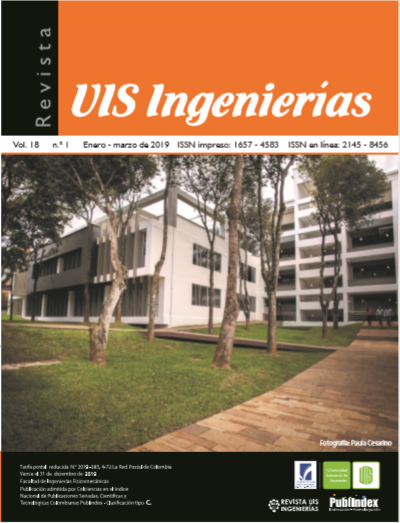Use of organic waste biomass for the design of an electric station
Published 2019-01-01
Keywords
- fast loading station,
- biogas,
- biodigestor
How to Cite
Abstract
Colombia has a high potential for biomass. In rural areas its use is focused on firewood for water heating and food cooking; therefore, it is essential to adopt solutions derived from new technological advances and studies in the generation of energy from this resource so that it contributes to social, cultural and economic changes leading to quality of life improvement in these isolated areas. In the processes of agricultural modernization, the transport sector plays an important role, as in planting and harvesting its use optimizes times in the harvesting of fruits by means of their transport to collection centers, as well as it allows to minimize times in pruning work, irrigation and soil preparation. Besides, it generates good agricultural practices and contributes to consolidate a more productive and sustainable field. Nevertheless, the vehicles used are powered by internal combustion engines and, due to their technical characteristics, they do not adapt to the requirements of Colombian geography; thus, it is important to develop technologies that lead to a rational use of energy, taking advantage of the great biomass potential that many regions of the country have. Accordingly, this is proposed to develop an electric charging station; an initial part of a macro project that is being developed in SENA which looks for the incorporation of electric utility vehicles to be used in the planting and harvesting of cocoa. In this paper, a physical-chemical characterization of two types of organic substrates (manure of pigs and chickens) is carried out in order to acknowledge the methane energy potential for the design of an electric station that serves as a feeder for rechargeable batteries. As a relevant result, the sample obtained from the 1: 3 ratio of pig manure is highlighted since a better methane production is achieved in a retention time of approximately 30 days, achieving a daily charge of the batteries in an estimated time of 6 hours which contributes to a management of slow charge cycles according to its control algorithm and to a complete equalization of the 1.980 cells that make up the 6 modules of the batteries.
Downloads
References
C. Samaras y K. Meisterling, “Life Cycle Assessment of Greenhouse Gas Emissions from Plug-in Hybrid Vehicles: Implications for Policy,” Environ. Sci. Technol., vol. 42, no. 9, pp. 3170–3176, 2008. doi: 10.1021/es702178s
J. Flórez Acosta, D. Tobón Orozco, y G. Castillo, ¿Ha sido efectiva la promoción de soluciones energéticas en las zonas no interconectadas (ZNI) en Colombia?: un análisis de la estructura institucional, cda, vol. 22, no. 38, 2009.
I. Tubert-Brohman, W. Sherman, M. Repasky, y T. Beuming, “Improved Docking of Polypeptides with Glide,” J. Chem. Inf. Model., vol. 53, no. 7, pp. 1689-1699, 2013. doi: 10.1021/ci400128m
B. J. Jobling Purser, S.-M. Thai, T. Fritz, S. R. Esteves, R. M. Dinsdale, y A. J. Guwy, “An improved titration model reducing over estimation of total volatile fatty acids in anaerobic digestion of energy crop, animal slurry and food waste,” Water Res., vol. 61, pp. 162–170, 2014. doi: 10.1016/j.watres.2014.05.020
I. Angelidaki et al., “Defining the biomethane potential (BMP) of solid organic wastes and energy crops: a proposed protocol for batch assays”, Water Sci. Technol., vol. 59, no. 5, pp. 927–934, 2009. doi: 10.2166/wst.2009.040
Federation Water Environment, Standard Methods for the Examination of Water and Wastewater. American Public Health Association, American Water Works Association, Water Environment Federation, 1999.
Jaime Marti, “Biodigestores familiares: Guía de diseño y manual de instalación”, Revista Virtual Pro, no. 147, 2014.
P. E. Poh y M. F. Chong, “Development of anaerobic digestion methods for palm oil mill effluent (POME) treatment,” Bioresour. Technol., vol. 100, no. 1, pp. 1-9, 2009. doi: 10.1016/j.biortech.2008.06.022
C. Wan, Q. Zhou, G. Fu, y Y. Li, “Semi-continuous anaerobic co-digestion of thickened waste activated sludge and fat, oil and grease,” Waste Manag., vol. 31, no. 8, pp. 1752–1758, 2011. doi: 10.1016/j.wasman.2011.03.025

